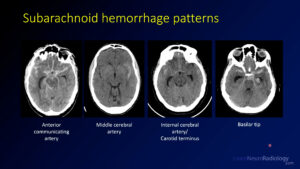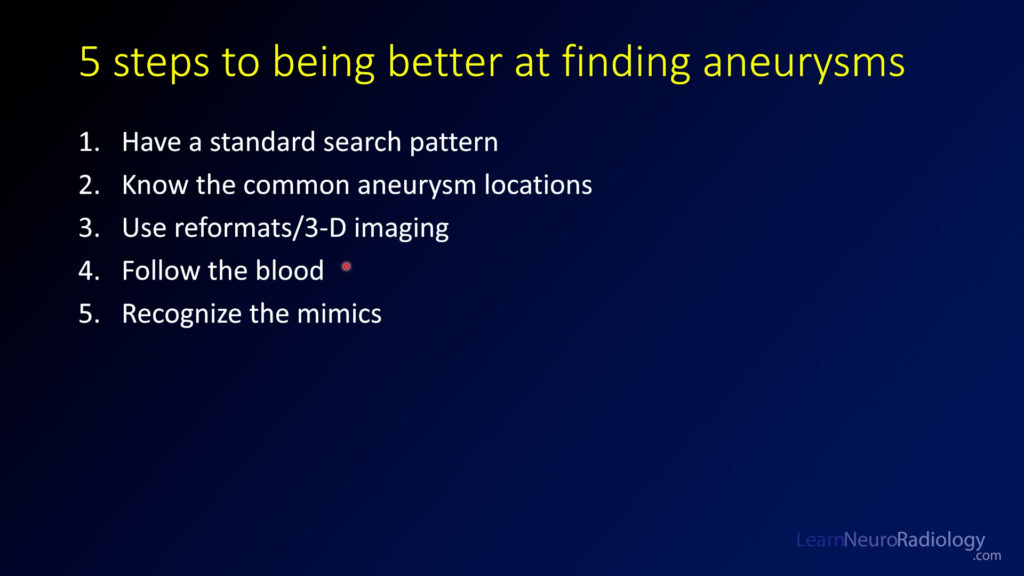Stroke vascular distributions – Imaging Case Review
Dr. Bailey is back for a case-based review of stroke and the vascular distributions commonly seen in stroke.
Introduction
In this video, we’ll review vascular territories in the brain as well as typical appearance of acute infarcts. This covers the distribution of the anterior cerebral artery (ACA), middle cerebral artery (MCA), posterior cerebral artery (PCA), cerebellar arteries, and basilar artery.
Case 1 – ACA infarct
This case shows an infarct in the right anterior cerebral artery distribution. There is loss of gray white differentiation on the CT. On MRI, it is even more apparent, with DWI abnormality which is dark on ADC. There is a corresponding abrupt occlusion of the ACA.
Case 2 – MCA infarct
In this case, there is hypoattenuation in the left posterior temporal lobe and inferior parietal lobe and posterior insular cortex. The MRI confirms that there is a stroke in this region. This is the posterior MCA distribution, with a posterior M2 branch occlusion
Case 3 – PCA infarct
There is subtle hypodensity in the left occipital lobe seen both on axial and sagittal CT. This is again confirmed on MRI, where there is T2 hyperintensity and diffusion abnormality. The MRA shows an abrupt cutoff of the left PCA.
Case 4 – Cerebellar infarct
This case shows a small, wedge shaped hypodensity in the left inferior cerebellum. MRI confirms abnormal diffusion in the left inferior cerebellum. In this case, the neck MRA shows
Case 5 – Multiple infarcts
This case shows multiple infarcts, including a right occipital and a left frontal infarct. When you have infarcts in multiple vascular territories, you should consider the possibility of a central source of thrombi, such as atrial fibrillation or cardiac disease, or vasculitis.
Case 6 – PCA plus
This case has an infarct in the left occipital lobe, but there is also hypoattenuation in the left midbrain and cerebral peduncle. MRI reveals even more areas of ischemia, including a small area in the right occipital lobe and multiple areas in the left thalamus. This indicates that the occlusion is more proximal and likely includes the basilar artery.
Case 7 – Medulla
This is a specific location which is frequently involved in infarcts, the lateral medulla. There is associated severe stenosis of the right vertebral artery.
Case 8 – Border zone
These are often seen as linear low attenuation along the border between vascular territories. In this case, it is the border between the ACA and MCA territories.
Special bonus case – artery of Percheron
This bonus case shows bilateral thalamic infarcts from an artery of percheron, a variant where the arterial supply for both thalami comes from a perforating branch on one PCA. This can also come from central venous thrombosis, so that is the other consideration
Special bonus case – venous infarct
If you have an infarction in an unusual location, particularly if associated with hemorrhage, then think about the possibility of sinus thrombosis. In this case, the straight sinus is dense and occluded on an MRV.
Summary
Hopefully these cases taught you something about the common locations of infarcts and their typical appearance on CT. Please check out the rest of the vascular and stroke content on the site.
See this and other videos on our Youtube channel


